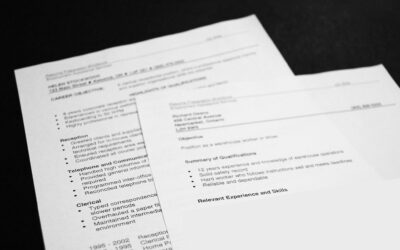Getting Ready for Your Fall Job Search Strategy
August marks the perfect time to prepare for September’s job market resurgence. Here is how to use these final summer weeks to position yourself for success.
If you have been released from your position or are considering a career change, you have heard that familiar advice: “Take some time for yourself.” Self-care is especially important during a career transition, and August presents a unique strategic opportunity. As hiring managers return from summer vacations and begin planning for fall initiatives, smart job seekers are quietly preparing to hit the ground running in September. For a deeper dive into strategies for standing out in today’s competitive market, see How to Compete in the 2025 Job Market.
The immediate aftermath of a layoff can feel overwhelming. Taking the right steps early sets the foundation for your entire job search. Start by understanding your severance package completely, not just the financial aspects, but also the career transition services available to you, reference policies, or non-compete clauses that might affect your strategy.
A Simple Job Search Routine
Create a simple daily routine that includes job search activities, even if it is just 30 minutes initially. This helps maintain momentum and prevents the isolation that can derail confidence during longer searches. Most importantly, resist the urge to immediately start applying for everything you see online. Strategic preparation now will make your applications much more effective later.
Your resume needs more than just adding your most recent position. Focus on quantifying your achievements with specific metrics wherever possible. Instead of “managed a team,” write “led and mentored a team of 8 to exceed quarterly targets by 15%.”
Pay special attention to keywords from job postings in your target roles and look for ways to integrate them naturally into your existing accomplishments rather than forcing them in.
Pro tip: create a master resume with all your experiences, then customize shorter versions for different types of roles or industries.
Do not forget the technical refresh: update your LinkedIn profile to match your resume, update your professional email signature, and review your online presence from a potential employer’s perspective.
While practicing common interview questions is important, spend equal time developing clear, concise stories that demonstrate your abilities and professional growth. Use the STAR method to structure these examples and prepare stories that can work for multiple types of questions.
The STAR Method:
Situation: Set the context. What was happening? Where were you working? What was the challenge or opportunity?
Task: What needed to be accomplished, specifically? What was your responsibility or goal?
Action: What steps did you take? Focus on your specific contributions.
Result: What happened because of your actions? Use numbers when possible – percentages, dollar amounts, time saved, problems solved.
Research the company, the industry (especially its challenges), latest news about the organization, and if possible, information about the people you will be meeting with.
Pro Tip: Prepare thoughtful questions based on your research that demonstrate genuine interest rather than generic curiosity.
Summer’s relaxed atmosphere creates excellent networking opportunities. While formal networking events slow down, informal connections flourish. Suggest coffee meetings on patios, walking meetings in parks, or casual lunch conversations. People are generally more approachable and have slightly more flexible schedules during the summer months.
Network Strategically This Summer
Do not limit networking to people who can directly hire you. Former colleagues, industry contacts, and even friends in different fields can provide valuable insights, introductions, or simply serve as practice for explaining your situation and goals clearly.
Use this time to establish systems that will serve you well when job search activity increases in September. Set up job search tracking spreadsheets, prepare templates for follow-up emails, and create a realistic schedule that balances online searching with networking and skill development.
As a career coach, I have helped people to understand that career transitions often lead to better opportunities than initially imagined. By preparing strategically, you will be ready to capitalize on fall hiring activity with confidence and clarity about what you would like the next chapter in your career to be.




